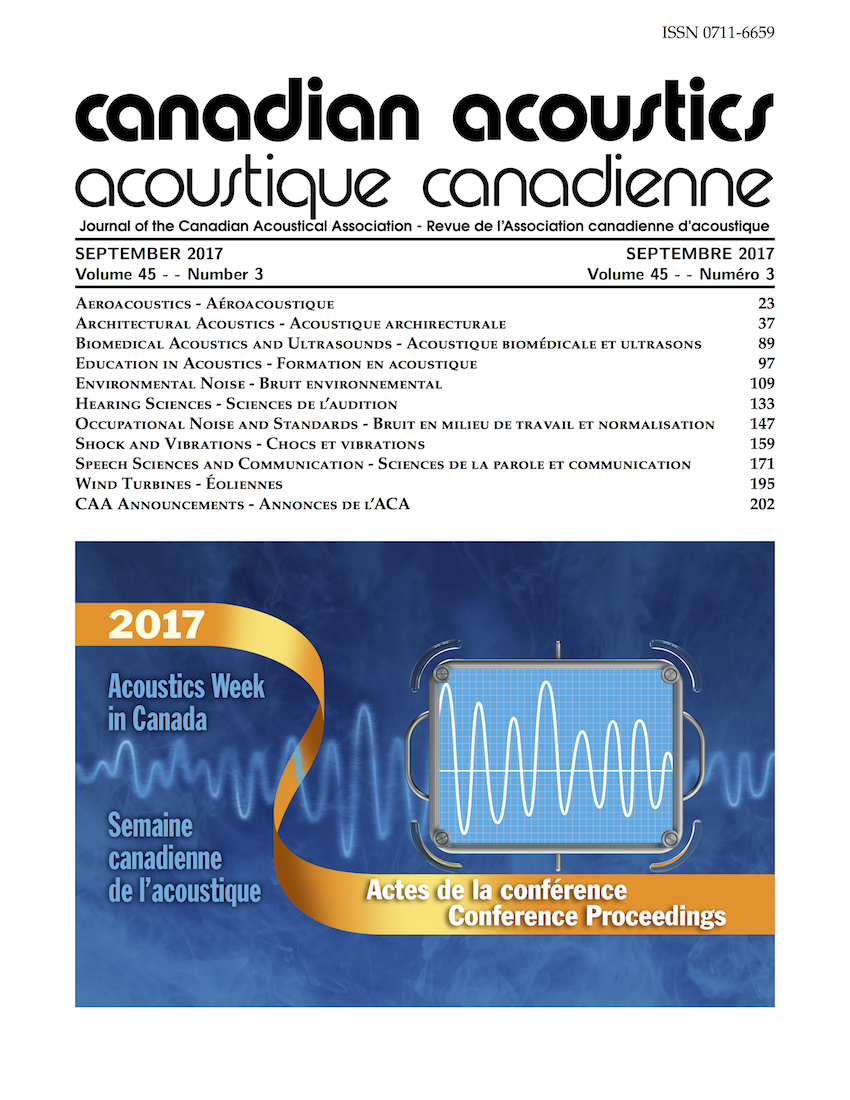PROBABILISTIC APPROACH TO SELECTING A REASONABLE MINIMUM SAMPLE OF ROOMS FOR ASTM E-336 TESTING
Abstract
Faced with the potential of assessing compliance of 10,000 rooms within a new building complex, a statistical approach was developed to minimize the number of partitions to be ASTM E-336 tested. The building was constructed with various wall STCs ranging from STC 45 through STC 65+. Testing was designed primarily for wall constructions of STC 50 and STC 55 as they dominate the number of construction types. In addition to assessing compliance, the testing program was devised to find chronic deficiencies in the wall constructions during the build to result in immediate improvements in construction practices. Partitions to be tested were selected to include samples of different partition constructions, configurations, and sizes, as well as different room types, and were selected as randomly as possible spread evenly throughout the complex. The random element in selecting partitions is essential to assess workmanship of different construction crews, and is also important for maintaining the integrity of the statistical prediction process discussed below.
A probability theory method was used to evaluate the results of field-measured ASTC versus the design STC requirements. This method includes a technique for assessing the results of remediating partitions that initially fail the criterion described above, and the subsequent remediation of similar partitions and adjustment of construction practices going forward. The statistical approach is designed to quantify the fraction of partitions that are rated a “Pass” for each round of testing and to compare the results to previous testing samples. The statistical analysis then provides a means of estimating the overall expected “Pass/Fail” rate for all partitions within the complex. The goal was to have a target % of total partitions to achieve the targeted ASTC rating. This level of performance is also achieved with a specific level of statistical confidence certainty. Testing of the complex was completed through an iterative process using the above approach until the set criteria were met.
Additional Files
Published
How to Cite
Issue
Section
License
Author Licensing Addendum
This Licensing Addendum ("Addendum") is entered into between the undersigned Author(s) and Canadian Acoustics journal published by the Canadian Acoustical Association (hereinafter referred to as the "Publisher"). The Author(s) and the Publisher agree as follows:
-
Retained Rights: The Author(s) retain(s) the following rights:
- The right to reproduce, distribute, and publicly display the Work on the Author's personal website or the website of the Author's institution.
- The right to use the Work in the Author's teaching activities and presentations.
- The right to include the Work in a compilation for the Author's personal use, not for sale.
-
Grant of License: The Author(s) grant(s) to the Publisher a worldwide exclusive license to publish, reproduce, distribute, and display the Work in Canadian Acoustics and any other formats and media deemed appropriate by the Publisher.
-
Attribution: The Publisher agrees to include proper attribution to the Author(s) in all publications and reproductions of the Work.
-
No Conflict: This Addendum is intended to be in harmony with, and not in conflict with, the terms and conditions of the original agreement entered into between the Author(s) and the Publisher.
-
Copyright Clause: Copyright on articles is held by the Author(s). The corresponding Author has the right to grant on behalf of all Authors and does grant on behalf of all Authors, a worldwide exclusive license to the Publisher and its licensees in perpetuity, in all forms, formats, and media (whether known now or created in the future), including but not limited to the rights to publish, reproduce, distribute, display, store, translate, create adaptations, reprints, include within collections, and create summaries, extracts, and/or abstracts of the Contribution.


